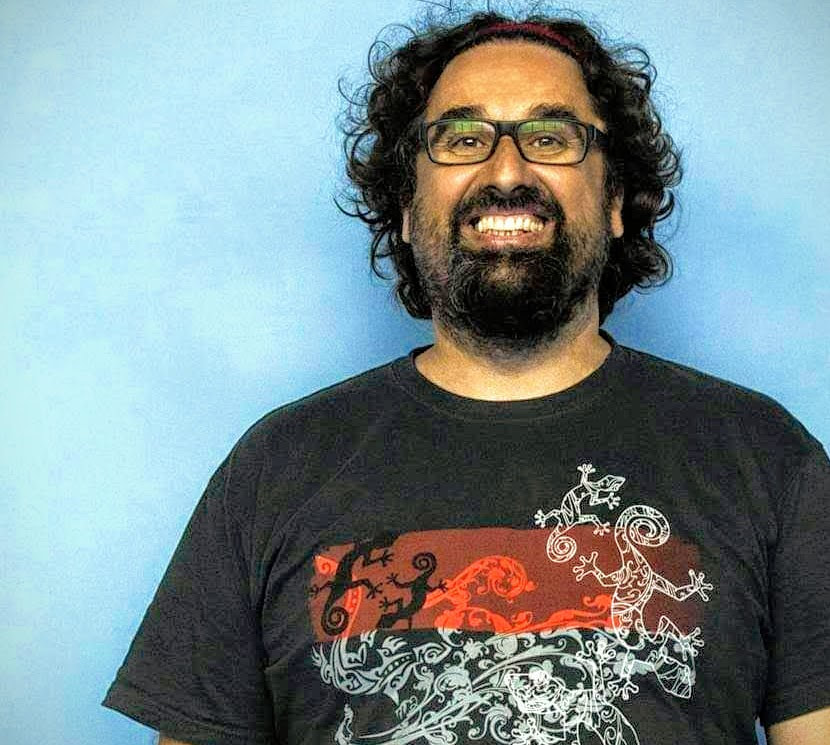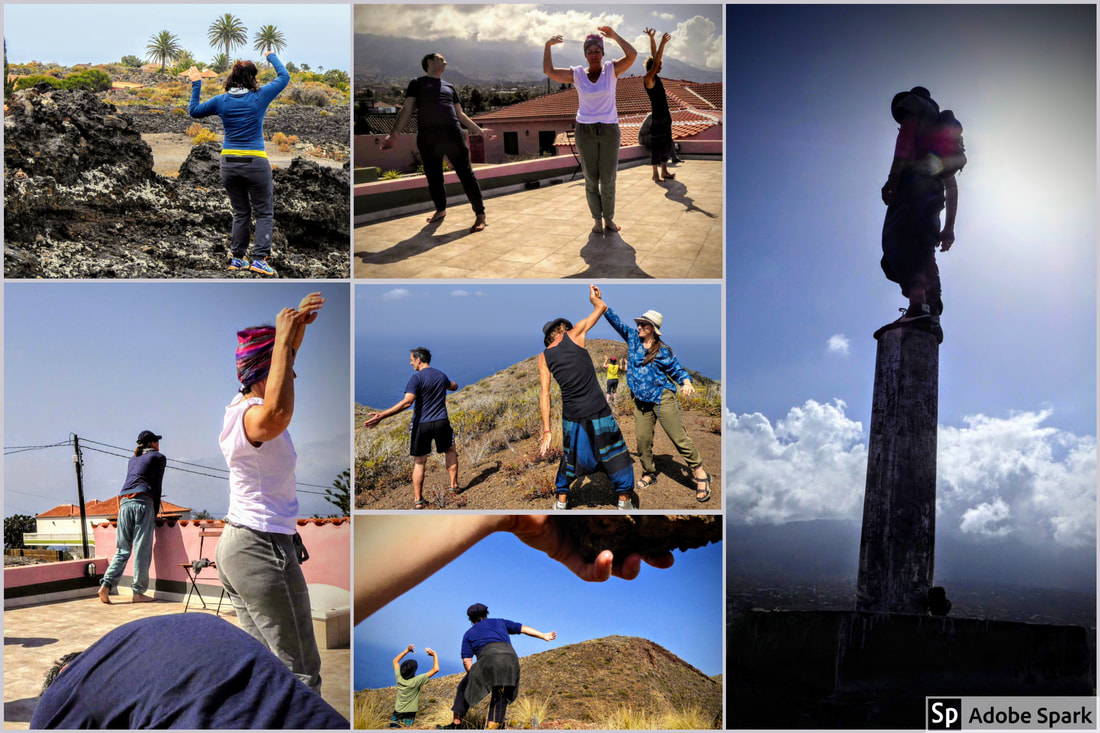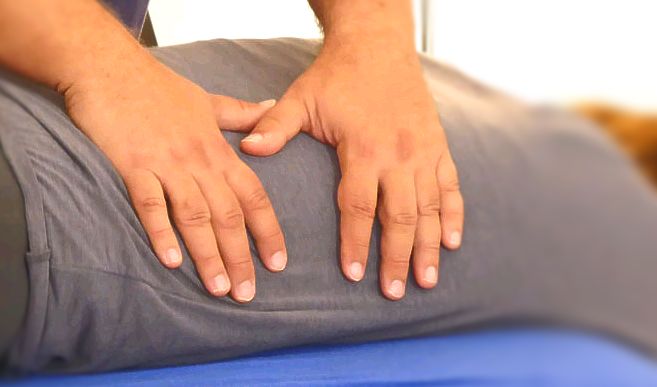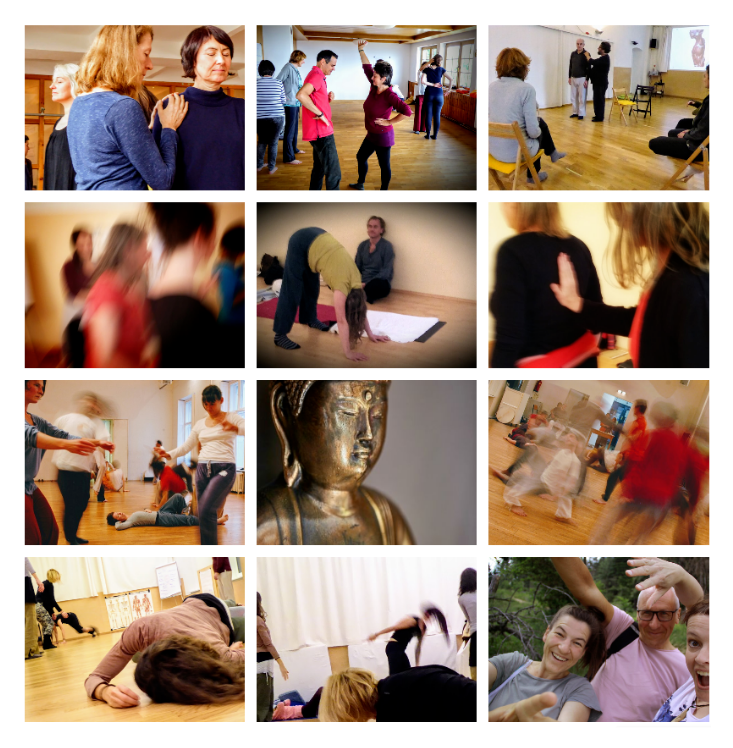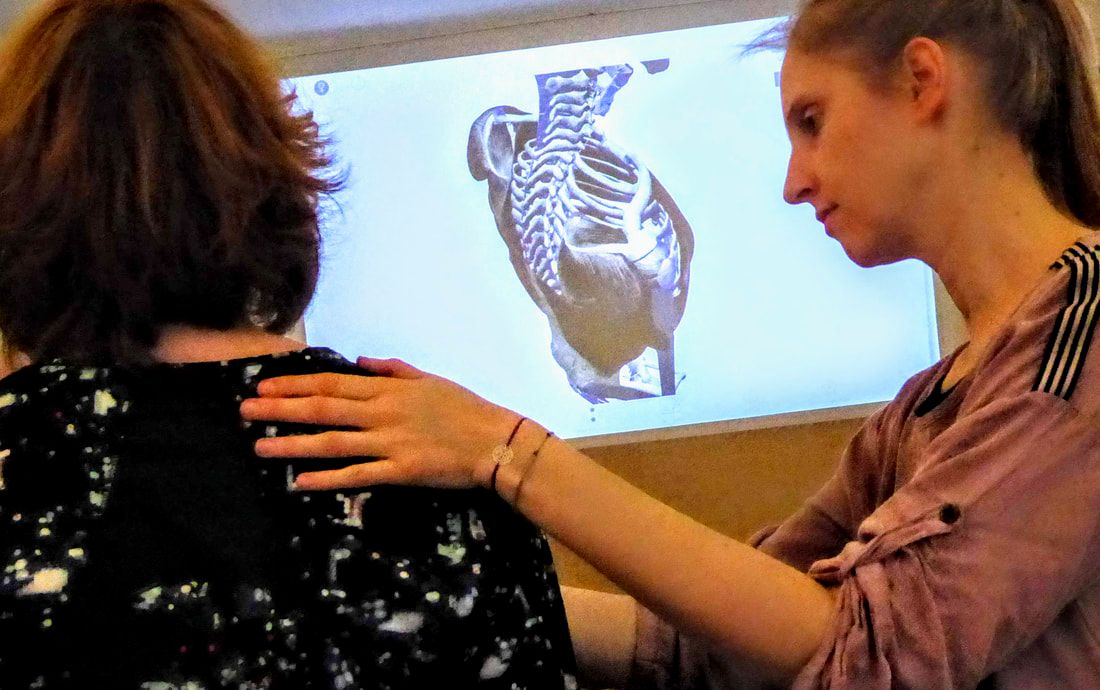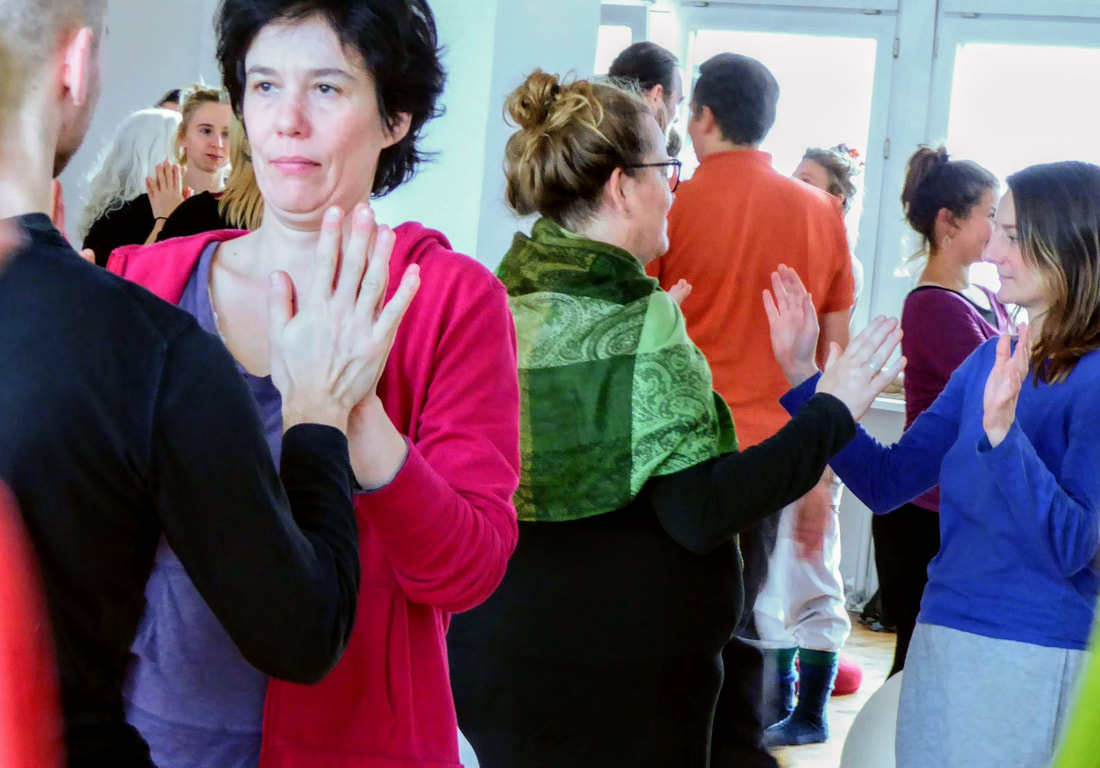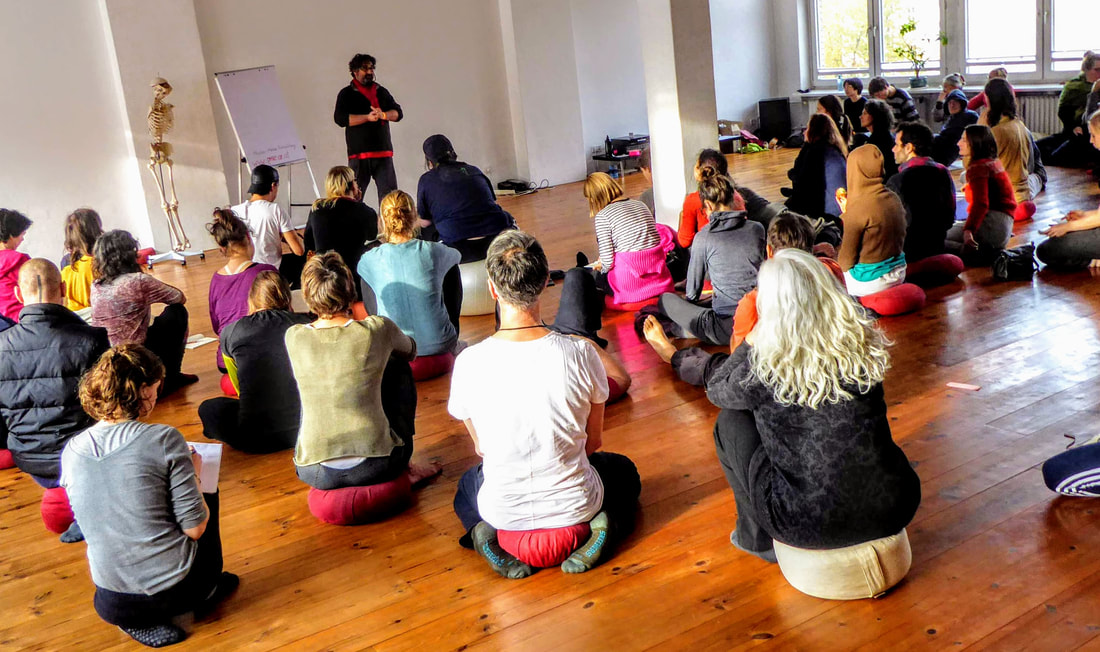The next modules of The Basic Somatic Training are:
ongoing: Foundation Module
15 x open class SOMATIC MOVEMENT online
every tuesday
Module 4
HEALING DANCE & SOMATIC TOUCH
Summer Intensives:
Intensive I: 27.07.2024 - 03.08.2024 (2pm-8pm, 1h break)
Zentrum Paradies - Forchtenstein / Austria
Intensive II: 31.08.2024 - 07.09.2024 (2pm-8pm, 1h break)
Studio Hara - Wien / Austria
( see calender)
Intensive I: 27.07.2024 - 03.08.2024 (2pm-8pm, 1h break)
Zentrum Paradies - Forchtenstein / Austria
Intensive II: 31.08.2024 - 07.09.2024 (2pm-8pm, 1h break)
Studio Hara - Wien / Austria
( see calender)
Welcome
|
Feedback
"The teacher is brilliant! :) Very passionate and knowledgeable on the topic, conveying precise and easy to understand knowledge, experience and enthusiasm along the course. Very friendly, approachable and generous in his support and feedback."
"Absolutely excellent and very unique. The training offers real insight into movement. Beyond categorized terms – and is also a space for personal growth and development. Very recommendable to all kinds of movement teachers."
"With its simplicity this training really enables one to focus and understand what "mindful" realy means. And by constantly emphasizing and explaining its importance it creates the safe space for it to be embodied."
"Personally, this has been an amazing and rich journey, connecting more to my body, physically and sensory, becoming curious and explorative, being more friendly and compassionate with my body and its processes. This course offered the space to go through a wide range of sensing, feelings, thoughts- from I feel nothing, I am not sure what is there... to overwhelming, humbling realizations about my self (mind, body, spirit)"
"Fun, collaborative, awe-inducing, educational, challenging, focused, and transformative. This is what comes to mind when I remember this module. I’m writing this feedback nearly 12 months after I took the module. This week planted the seed for an awakening process for my awareness. The only thing that exists is right here right now and that’s true for everything everywhere."
Somatic Movement
|
Somatic Movement is a practice designed to enhance inner alignment, mindfulness, health, and bodily freedom by encouraging individuals to listen to their body's messages and develop their unique movement vocabulary. This practice involves mindful attention to bodily processes, promoting self-organization and development through a somatic dialogue where sensing acts as a question and movement as the answer. Somatic Movement emphasizes the importance of the quality of sensations over the form of body positions, advocating for slow, conscious movements focused on internal experiences rather than end results. It offers numerous benefits, including harmonizing body and mind, releasing tension, improving alignment, and opening emotional channels for creativity. By engaging the parasympathetic nervous system through inward sensing, Somatic Movement helps shift from stress responses like fight, flight, freeze, or fawn to a state of rest and healing, allowing for the expression and release of stored emotions, thereby aiding in mental and emotional recovery.
highlights of the curriculum are:
Our program blends classic somatic movement with anatomical embodiment, featuring advanced 3D animations for a unique and immersive experience. Enhance your journey with somatic self-coaching for comprehensive healing.
highlights of the curriculum are:
- the practice of somatic movement
- exercises vs free movement
- stillness vs movement
- positions vs flow
- exploration / somatization
- full body movement vs spezifikation
- spatial relationships
- gravity
- archaic movement patterns
- attention
- quality of sensations
- mind factors
- reflection / finding words
- feelings / emotions
Our program blends classic somatic movement with anatomical embodiment, featuring advanced 3D animations for a unique and immersive experience. Enhance your journey with somatic self-coaching for comprehensive healing.
Anatomical Embodiment
|
Anatomical Embodiment is a practice that applies scientific knowledge of anatomy and physiology to individual experience, enhancing body-schema and body-image through sensation, movement, and touch. This method begins with theoretical input on anatomy, followed by personal exploration using the "Somatic Dialog" of Method PME to achieve healing and beneficial results. The aim of Anatomical Embodiment is to foster an embodied understanding of anatomy, promote freedom and integration of pain-free movement, and reveal the relationship between physical and mental qualities. It enhances self-esteem and character development by uncovering hidden qualities, leading to better self-regulation and awareness of the emotional history stored in the body. The content includes exploration of body parts, tissues, neighboring structures, systems and organs.
highlights of the curriculum are:
highlights of the curriculum are:
- axes / inside spaces
- spatial organisation
- spine
- bone tissue
- head & neck
- pelvis - sacrum- isj
- breathing
- heart - lungs - rib cage
- shoulder girdle
- upper extremity
- lower extremity
- introduction organ tissue
Somatic Coaching
|
Somatic Coaching applies the principles of Physio-Mental Development (PME) in a one-on-one setting to address personal, professional, and social issues through touch and movement. This approach transforms emotional and physical concerns into healing development by initiating a "Somatic Dialogue" that fosters safe, reflective, and client-centered self-organization. The coach guides the client to access their inherent solutions, enhancing relaxation, clarity, emotional intelligence, and personal resources. Somatic Coaching promotes holistic problem-solving, gut decisions, and embodied leadership by translating unconscious knowledge into practical actions. This trauma-sensitive method fosters the gentle release of old injuries and the development of new, wholesome behavior patterns.
highlights of the curriculum are:
highlights of the curriculum are:
- the practice of somatic coaching
- the role of the coach / therapist
- setting, time & space
- the somatic dialogue
- the steps of somatic coaching
- the grid of the levels of perception and action
- using touch in coaching
- self - coaching
- stop - coaching with group supervision
- analyzing recorded coachings
- supervised coaching
- poly-awareness
- the grid of perception and action
Healing Dance
|
- Healing Dance is a holistic dance practice designed to foster emotional expression, self-awareness, and relational skills through free and playful movement. It integrates somatic movement to access the body and spirit, encouraging participants to feel, touch, connect with themselves and others and find a mutual dance. This dance practice emphasizes the joy of life, healing development, and self-organization, allowing for spontaneous and diverse movement without predefined steps. Emotional and tactile touch are key, enabling direct expression of feelings and promoting healing. Safety, trust, and a non-judgmental environment underpin the experience, facilitating honest self-exploration and supportive dialogue. Healing Dance also incorporates mindfulness and compassion, offering metaphors for life and pathways for personal and spiritual growth. While not a medical therapy, it aims to enhance physical and mental health, encouraging a balanced and liberated life.
- the practice of healing dance
- safety and trust
- emotional expression through movement
- touch and being touched
- free movement and improvisation
- the somatic dialogue in touch and movement
- communication and relationship skills
- leading and following
- activity and passivity
- surrender and resistance
- impression and expression
- dancing qualities
Somatic Touch
|
Somatic Touch is fundamental to our healing development, impacting us physically, mentally, and emotionally. As the tactile sense is the first to establish contact with the outside world, it forms the basis of our communication and defines our self-awareness. Treatments using the PME method involve a comprehensive approach that includes anatomical understanding, embodiment practices, healing touch, and a mindful and compassionate touch quality. This method also integrates anatomical-systemic touch quality, a healing mindset, work on the massage table, practical grips, passive movement, and complete treatments. Techniques such as Easy Hands-On and Somatic Dialogue are employed, accompanied by feedback rounds and supervision focused on touch qualities, ensuring a holistic and supportive healing experience.
highlights of the curriculum are:
highlights of the curriculum are:
- the practice of somatic touch:
- safety and consent
- helpful & healing touch
- mindful and compassionate touch quality
- anatomical-systemic touch quality
- healing attitude of the mind while touching
- easy Hands-On
- somatic dialogue with touch
- touch and move
- steps of coaching with touch
- supervision on touch qualities
Dieter Rehberg, MA, BA, MSMT/E, is Psychological Counselor (LSB), Master of Somatic Movement Therapy and Education(ISMETA), Somatic Dance Educator , Massage Therapist and Performance Artist. Rehberg is Trager-Practitioner and certified in Idiolektics and has extensive experience and knowledge in Release Technique, Contact Improvisation, Creative Dance, Alexander Technique and Body-Mind Centering. He developed his method integrating these different dance, bodywork and counseling techniques from his 35 years of professional experience as somatic therapist and performance artist combining it with his insights into buddhist theory and practice. He is the director of the "Institut und Akademie für Physio-Mentale Entwicklung" and founder of THE SOMATIC TRAINING. Rehberg holds a Bachelor of Arts from the European Dance Development Center / NL, the Trauma Certificate from Laurier University / CAN and a Master of Arts in Somatic Studies from Middlesex University / UK. For 25 years he worked in his private practice in Vienna / Austria and teaches nationally, internationally and online.



